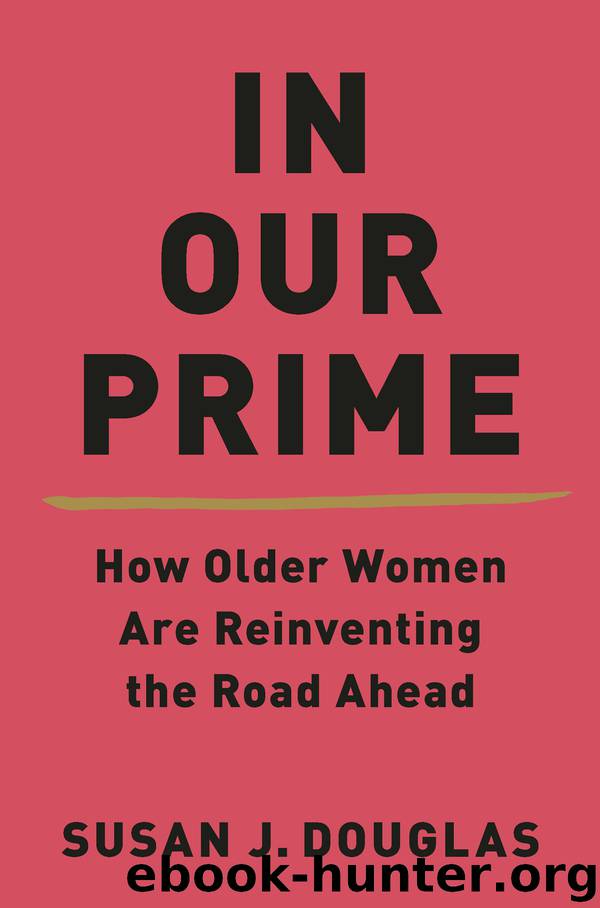In Our Prime by Susan J. Douglas

Author:Susan J. Douglas
Language: eng
Format: epub
Publisher: W. W. Norton & Company
Published: 2020-02-05T16:00:00+00:00
CHAPTER 6
The War on Older Women
FAR AWAY FROM the bougainvillea-draped precincts of southern California, and in the less-friendly, Corinthian-columned, gilt-embellished, white-male-dominated U.S. Capitol (where of the one hundred statues of dignitaries in its collection, only nine are women), a very different drama has been unfolding, especially over the past thirty years or so: the determined effort to eliminate, or at least claw back, some of the so-called entitlements that support millions of older Americans. This has been happening at the state level as well. It has been one of the most lusted-after goals of neoconservatives, the bull’s-eye target of market fundamentalism. The great and obvious irony here is that these efforts to relegate older people to living on cat food and never seeing a doctor again coincide with the increasing graying of America; talk about one arrow going up and another going down!
In all the talk, much of it hypocritical and dishonest mansplaining about what this means for “our seniors” (God, when can we get rid of that term?), an immensely important yet totally unacknowledged core of the campaign has not been called out, and it needs to be: this is a war against older women. To track it, we need to look at a different medium, the news, and the role it has played in abetting the war while also rendering its gendered consequences invisible.
Here is the basic takeaway: neoconservatism, the avid belief in the free market, is not only sexist, it is also ageist, and racist, and has women of a certain age—especially those not basking in the sun in Malibu—directly in its crosshairs. Yes, while gutting Medicare or Social Security will affect everyone over sixty-five (and some much younger), women live longer than men and typically have less saved up in Social Security because of lifelong lower salaries, work interruptions to care for children (and others), or minimal to no savings because they did not work outside the home (or, like domestic workers, were paid under the table, so have nothing). Nearly 55 percent of Social Security recipients are women.1 Medicaid is also crucial to them. African American and Latina women have been especially concentrated in lower-paying jobs that typically lack pensions of any sort. They are also less likely to have any home equity or lifelong investments.2 The number of Native American women over sixty-five has increased dramatically since 2000, yet they remain completely unnoticed and confront an even more fractured infrastructure of care.3
So millions of women enter this stage of life with fewer resources than men, yet our system of support has not even begun to catch up with this situation, to make sure older women are not further penalized for earning lower salaries or for their work as often-unpaid caretakers earlier in their lives.4 While most older women are usually unseen on the screens of America, everyday middle-class women, working-class women, and poor women are rarely seen, except, occasionally, as disaster victims. This invisibility—what they are going through and what they need—powerfully enables their neglect in the very political precincts that should be attending to them.
Download
This site does not store any files on its server. We only index and link to content provided by other sites. Please contact the content providers to delete copyright contents if any and email us, we'll remove relevant links or contents immediately.
On the Front Line with the Women Who Fight Back by Stacey Dooley(4307)
The Lonely City by Olivia Laing(4111)
The Rules Do Not Apply by Ariel Levy(3897)
Bluets by Maggie Nelson(3704)
The Confidence Code by Katty Kay(3560)
Three Women by Lisa Taddeo(2915)
Inferior by Angela Saini(2829)
A Woman Makes a Plan by Maye Musk(2824)
Pledged by Alexandra Robbins(2788)
Not a Diet Book by James Smith(2715)
Confessions of a Video Vixen by Karrine Steffans(2668)
Nice Girls Don't Get the Corner Office by Lois P. Frankel(2589)
Wild Words from Wild Women by Stephens Autumn(2584)
Brave by Rose McGowan(2497)
The Girl in the Spider's Web: A Lisbeth Salander novel, continuing Stieg Larsson's Millennium Series by Lagercrantz David(2379)
The Clitoral Truth: The Secret World at Your Fingertips by Rebecca Chalker(2239)
Why I Am Not a Feminist by Jessa Crispin(2235)
Women & Power by Mary Beard(2219)
Women on Top by Nancy Friday(2118)
